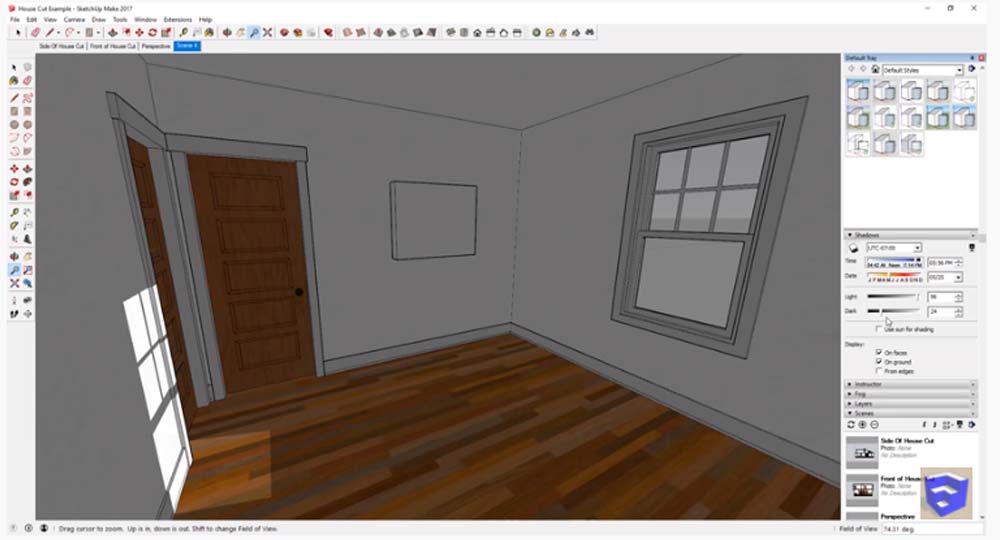

For any project, you can see exactly how it will look. With true-to-life lights, cameras, and materials, rendering with V-Ray is as real as it gets. *V-Ray Vision for MacOS will be supported in an upcoming release. Move around your model, apply materials, set up lights and cameras - all in a live real-time view of your scene. Now with V-Ray Vision*, you can visualize your designs in real-time while you work in SketchUp.

Seeing your Sketchup designs in real-time has never been easier. From beginner to pro, V-Ray has all the tools you need to visualize your SketchUp projects from start to finish. V-Ray for SketchUp is a 3D rendering software that combines real-time and photoreal rendering - all in SketchUp. When you triple-click an edge or a face, you select the whole conglomeration that it’s a part of.Introducing the Next Generation of RenderingĬhaos V-Ray for SketchUp is the ultimate visualization solution for SketchUp artists and designers. What happens when you triple click a face in SketchUp? For example, if you want to separate text from SketchUp model entities, you can place each type of entity on its own layer. In Layout, regular layers (also called nonshared layers) enable you to control the visibility of document content. From beginner to pro, Chaos® V-Ray has all the tools you need to visualize your SketchUp projects from start to finish. V-Ray® for SketchUp is a 3D rendering software that combines real-time and photoreal rendering - all in SketchUp. Use the Luminance slider to adjust the emission intensity the maximum intensity is 100,000 candelas.

You can then check the box next to Self-Illumination to make the material emissive. Simply select your material in SketchUp and open the Material Editor through the Enscape ribbon. Verify the parameters of each directional light source in the Object Info palette. Insert each directional light source by selecting View > Set Sun Position.Ĥ. Add the objects to the drawing that will cast a shadow on the site (a house, for example).ģ. In the “Window” menu, check off “Shadows” How do you do a shadow analysis?ġ. Step 2: Set your Location: From the “Window” menu, select “Model Info”.ģ. Step 1: Build a model of the object(s) you want to see the sun path on: You will need to learn a bit about modeling things in SketchUp to do your model.Ģ. Now you know where you can and can’t place the solar modules for optimum performance. Next you remove the shadow lines that don’t apply and outline is the objects shadow. Than you place the shadow lined on the corners of the object. The first step is to scale the shadow length template to the height of the object.


 0 kommentar(er)
0 kommentar(er)
